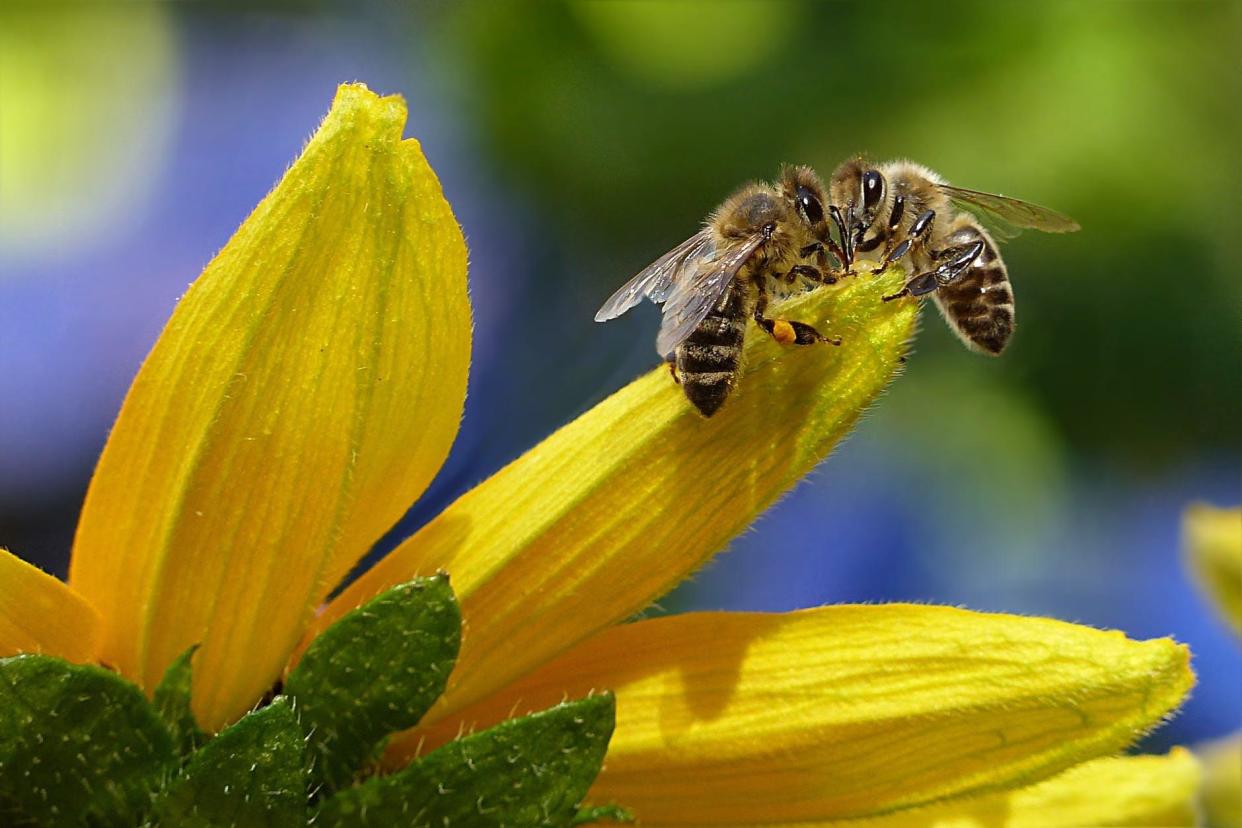Campbell Vaughn: Take part in the Great Pollinator Census and be a scientist for a day

On Aug. 18-19, the Great Southeast Pollinator Census is happening and we need citizens to be scientists for a couple of days.
Since 2029, the University of Georgia has hosted the Great Southeast Pollinator Census. It was initially the Great Georgia Pollinator Census, but with the program being so popular as well as beneficial, states keep getting added to participate. Last year it was the Palmetto State and this year the program added the Tarheel State. We are going to count some bugs and do it with our Carolina friends.
And why are we doing that? Because we need information and the more people who participate the better the data is going to be. It is a really cool project.
What is pollination and why is it important? The simple explanation for pollination is the act of transferring pollen from the male part of the plant (anther) to the female part of the plant (stigma), so a seed can be produced. Seeds make new plants which is the goal of every living organism. Flowers are the tools that make this happen. Pollen has to move from the same species of one plant to another plant to produce the seeds. Pollination can be done by wind (pine trees or corn), water, birds, bats and a variety of insects like moths, butterflies, wasp, flies and bees. Animals that pollinate are referred to as pollinators.

When a pollinator happens past a plant flower for feeding or lounging, the tiny pollen particles stick to the what is usually a hair and when the animal moves to the next plant, so does the pollen. With lots of flowers and lots of insects traveling great distances, it is a numbers game on which plants get pollinated.
About 30% of all food production is directly related to pollinators. For one out of every three bites on your plate, we need thank a pollinator. And we are about to find out how well pollinating insects are faring.
In the agriculture field there is a constant buzz about pollinators. (I couldn’t resist the terrible pun while my son’s eyes roll.) There is a lot of information on bees declining (especially honey bees) for a variety of reasons and it is a struggle to find solutions. Bees are great for pollinating plants, but we have lots of different native insects that are vital to plant reproduction. This census is going to help with research and you don’t have to be an entomologist to participate.
Campbell Vaughn: Try these tips to keep centipede lawns looking healthy
Campbell Vaughn: Brown patches in lawns could be a sign of an armyworm infestation
Visit gsepc.org and watch the two-minute video. Download and print out the census form and get ready. (If you don’t have a printer, we will be glad to print you a couple from our office at 602 Greene Street in downtown Augusta.) The form is actually pretty cool because it has pictures of the types of insects from which you will be looking. With the form in hand, find a plant or group of bloomers that are buzzing with insects. I have a newly planted dwarf butterfly bush next to some yellow lantana that I will be observing.
For 15 minutes you will look for the particular types of insects listed on the form. The best times of day for observing lots of these flower lovers is about 11 a.m. to 6:30 p.m. You don’t have to differentiate between an Eastern Tiger Swallowtail and a Polydamas Swallowtail. You will just need to mark “butterfly” on the line. The same goes for other categories like wasp, flies and bees. There is also a fantastic identification guide on the gsepc.org website to help.
The census is designed for anyone to participate. There is also lots of other pollinator information on the webpage as well, including information of previous years data from all 2,975 from 2022’s census. There is also a link to their Facebook page.
Enjoy being a scientist for a couple of days. Grab a kid or a friend and let’s get out and count some bugs.
This article originally appeared on Augusta Chronicle: Great Southeast Pollinator Census to be held in August

